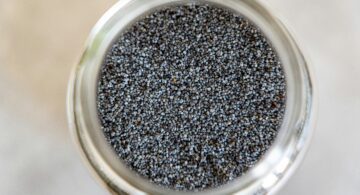Arsenic—Like it or Not, You’re Getting a Daily Dose!
If you enjoy British suspense fiction, you probably associate arsenic with an Agatha Christie murder mystery. And while this article is anything but fiction, it still contains a fair amount of mystery and intrigue!
Why so much mystery surrounding arsenic? We’ll get to that, but first a little background.
Arsenic is a heavy metal occurring naturally in soil, rocks, water, and air. Arsenic is also introduced to the environment through mining, pesticides and other industrial applications.
There are two categories of arsenic: organic and inorganic. While inorganic arsenic is usually associated with long-term health issues, both forms of arsenic are found together in soil and ground water. And that is how arsenic finds its way into our food.
When arsenic is present in the soil or ground water, plants that are growing in that soil and water take it up. As a result, anything that is grown can potentially contain arsenic. Rice is particularly prone to absorb arsenic due to the fact that it grows in standing water. Ground water leeches arsenic from the soil and rocks through erosion and often contains higher levels of this heavy metal and is more easily absorbed by plants. But there are other key factors too.
For instance, due to the former use of arsenic-based pesticides in the US, rice grown here typically has higher concentrations of arsenic than rice grown in Southeast Asia or India. Many of our present day rice fields in the South were once cotton fields where arsenic-based pesticides were used to kill the boll weevil.
Another factor is that arsenic settles in the germ of a grain. Because of this, brown rice (that still contains the germ) has higher levels of arsenic than white rice. Fruit juices also present a known source of higher levels of arsenic.
The above example of brown rice begins to reveal some of the intrigue and mystery around arsenic. While whole grains are typically healthier for us than refined grains, if we’re just looking at arsenic levels, the opposite could be true!
Also, while most of us would choose organic over non-organic grown vegetables, in the case of arsenic, unfortunately there is no difference. Organically grown foods can contain just as much arsenic as non-organically grown foods.[1]
Why Is Arsenic Dangerous?
Arsenic was the favorite poison employed by Agatha Christie murderers, and for good reason. High doses of arsenic are deadly and long-term exposure to this heavy metal is known to cause lung, kidney, skin and bladder cancers.[2]
Lower levels of arsenic can cause nausea and vomiting and upset the production of red and white blood cells in the body. Arsenic can bring on abnormal heart rhythms, cause damage to blood vessels, and cause a pins-and-needles sensation in the hands and feet.[3]
Arsenic may also cause problems with pregnancy, such as miscarriage and low birth weight and affect brain development in young children.[4] A 2004 study showed that children had lower IQ scores who were exposed to arsenic in drinking water at levels above 5 ppb.[5]
Arsenic, like other heavy metals, remains in the soil for many years after its introduction through natural or human means. Due to its chemical makeup, plants readily absorb it as though it were a nutrient.[6] Arsenic hangs around in our bodies too. It settles in the keratin our bodies use to create nails and hair.[7]
Another thing that makes arsenic dangerous is the ease with which we consume it. A recent study of 850 people by Dartmouth University revealed that food is likely the main source of arsenic intake.[8] Virtually every plant can contain arsenic. Ironically, the leafy green vegetables and cruciferous vegetables that are so good for us nutritionally hold higher concentrations of the heavy metal than other vegetables.[9]
Unregulated private water wells are also a common source of arsenic. Dark-meat fish like tuna, mackerel, salmon, and sardines may also contain higher levels of the arsenic toxin. Chicken and poultry are often given drugs that contain arsenic. This leads to higher levels of arsenic in the meat.[10]
While it is believed that low levels of arsenic in foods don’t cause immediate health problems, the truth is, we just don’t know. Also, while health problems are usually linked to inorganic arsenic, wherever inorganic arsenic is found, organic arsenic seems to be present also. So the jury is out on that verdict as well. You can see now why there’s so much mystery around arsenic.
Here’s yet another intriguing tidbit: “The Environmental Protection Agency assumes there is actually no ‘safe’ level of exposure to inorganic arsenic.”[11] Yet arsenic has been used in very small amounts in medicine for at least 2000 years.[12]
As a homeopathic remedy, arsenic has been used to treat a wide variety of issues from digestive disorders to allergies to depression.[13] In fact, although considered a carcinogen, arsenic is effective in treating some forms of leukemia.[14] Clinical trials are underway to consider using arsenic as a first-line of treatment against leukemia where chemotherapy (also a known toxin) has been used in the past.
It is wise to note, however, that most present cases of arsenic overdose occur when taking homeopathic remedies. If people followed dosage recommendations they’d be okay, but many think that more is better and poisoning occurs.
How Much Arsenic Is Dangerous?
Experts estimate that we ingest between 12 and 50 micrograms of arsenic per day through our food and water.[15] But we know so little about arsenic that the trace amounts found in our food may even be beneficial. If so, we still don’t know its function. Ironically, WebMD lists 12-25mcg/day as a suggested dietary requirement.[16]
If we can trust that standard, begin looking at your diet. Since rice is one of the culprits with higher levels of arsenic, let’s look at a few samples.[17]
- Lundberg California white basmati, the lowest US grown rice comes in at just 1.3-1.6 mcg per ¼ cup uncooked.
- Carolina whole grain brown rice on the other hand boasts 6.4-8.7 mcg of arsenic per ¼ cup uncooked.
- Archer Farms organic basmati (India) contains 1.3-2.2 mcg per ¼ cup uncooked.
Clearly, it matters where the rice is grown. Check out Consumer Reports and search “Arsenic in your food” for a more complete list of rice and other foods and their levels of arsenic. At the end of this article, we’ve provided a recipe for reducing the levels of arsenic in your rice.
While the FDA has established standards for allowable levels of arsenic in public water systems (10 ppb), no such standards have been set for food. However, in public water systems where fluoride is added, it is commonly contaminated with arsenic as well.[18]
The reason for this is that the added fluoride is not pharmaceutical grade, but rather diluted fluorosilic acid, which is a by-product of the fertilizer industry! As a result, “the Natural Resources Defense Council estimates that as many as 56 million Americans living in 25 states drink water with arsenic at unsafe levels.”[19] No wonder many are up in arms about the fluoridation of public water.
The FDA does monitor the arsenic levels in certain foods and continues to study its impact on our health. But so far they have not established guidelines for allowable levels of arsenic in foods.
What Should You Do to Minimize Your Risk for Arsenic Poisoning?[20]
- If you live on a private well, have it tested for arsenic. Public water is already tested and regulated for contamination.
- If you are on public water, obtain a water quality report from the EPA. If arsenic is present, purchase a high-quality water filtration system. Either carbon-based or reverse osmosis systems work well.
- Cut back on foods known to harbor higher amounts of arsenic. Some of these include: rice, fruit juices (especially apple, grape and pear), cruciferous and leafy green vegetables, seafood, non-organic poultry, wine and beer. There’s no need to remove these foods from your diet, just eat them less frequently.
- Rinse rice well before cooking. This can remove about 30 percent of the arsenic.
- If you use homeopathic remedies that contain arsenic, make sure that you purchase them from a reliable source and that you take only the recommended dose.
How to Reduce Levels of Arsenic in Your Rice
As stated above, choose your rice from a good source. Arsenic levels tend to be significantly lower in rice grown in Southeast Asia and India, but California grown rice is also a great choice. Then follow the directions below.[21]
- Thoroughly rinse the rice in a colander or sieve until the water runs clear. This may reduce arsenic in the rice up to 30 percent.
- Place rice in a pot at a 6:1 ratio of water to rice. Cooking rice in excess water can reduce arsenic levels by another 50 to 60 percent. If you normally add salt when cooking rice, increase the amount of salt you add proportionately.
- Bring rice and water to a boil, then reduce heat and simmer until rice is tender. (About 30 minutes.)
- When rice is tender, drain and rinse it again in a colander or sieve under hot water. Use hot water to prevent the rice from cooling.
- Return the rice to the empty pot to dry. Place a clean kitchen towel over the top of the pot and then put the lid on top of the towel. After rinsing, the rice will be too wet. By putting it back in the covered pot, the towel will soak up excess moisture from the rice through evaporation. You may need to put the pot on extremely low heat to produce the desired evaporation. But be careful not to burn the rice or the towel! This may take 10-15 minutes.
Following the above steps produces delicious rice and can greatly reduce the amount of arsenic.
Due to the fact that we know so little about the long-term effects of exposure to arsenic, this is a topic we should come back to often for updates on more recent research. Meanwhile, follow the recommendations above to minimize your risk.





















